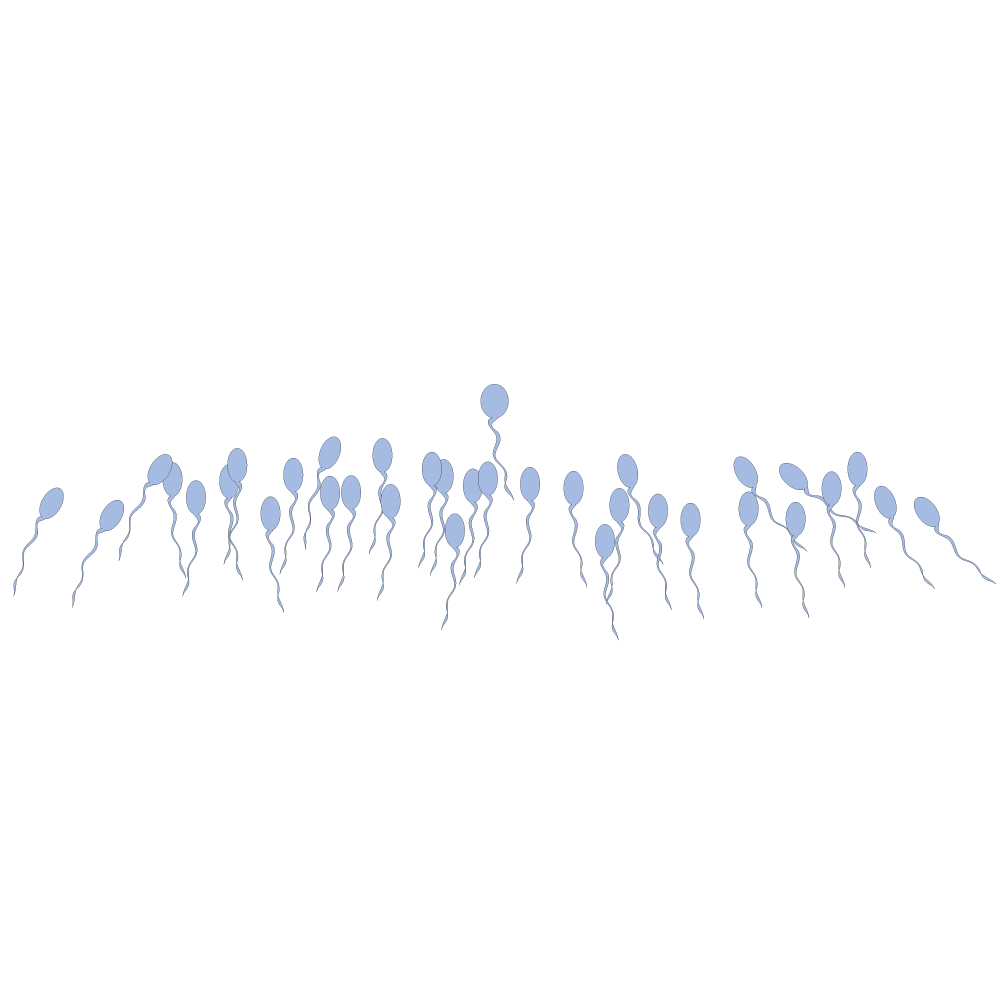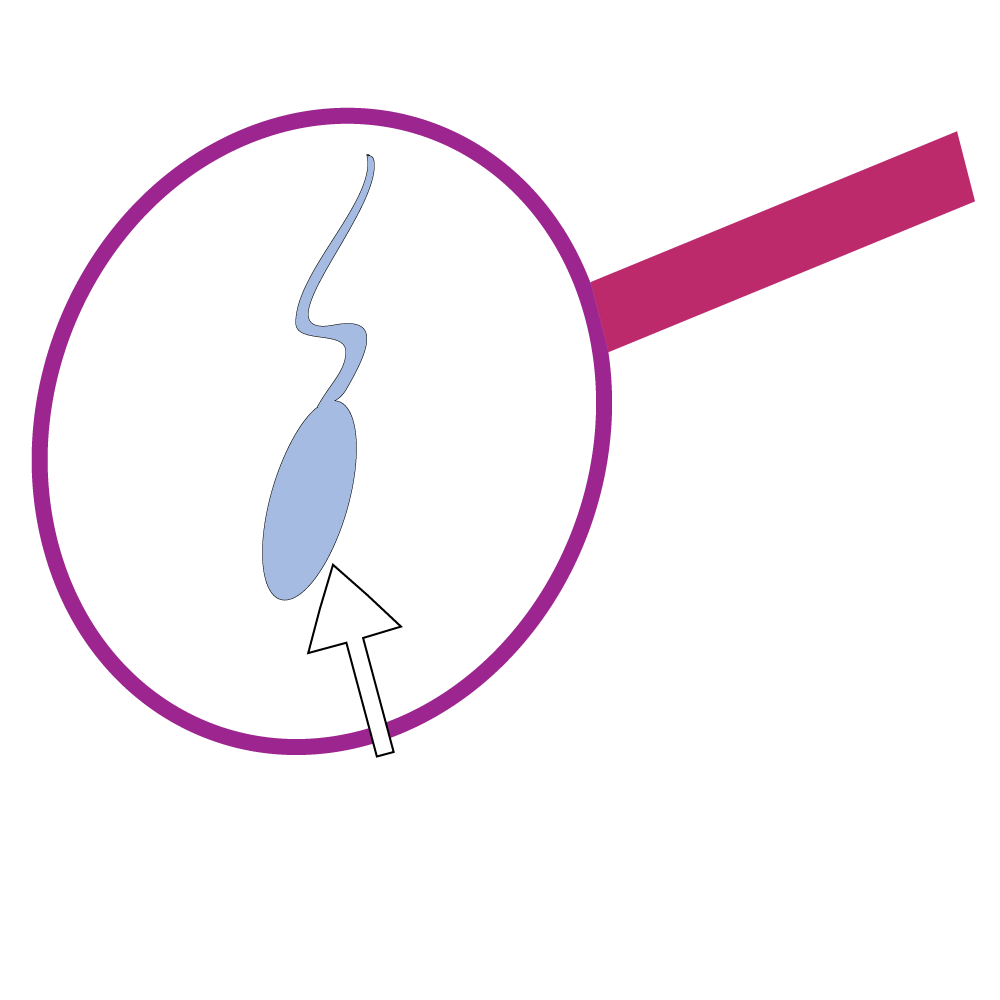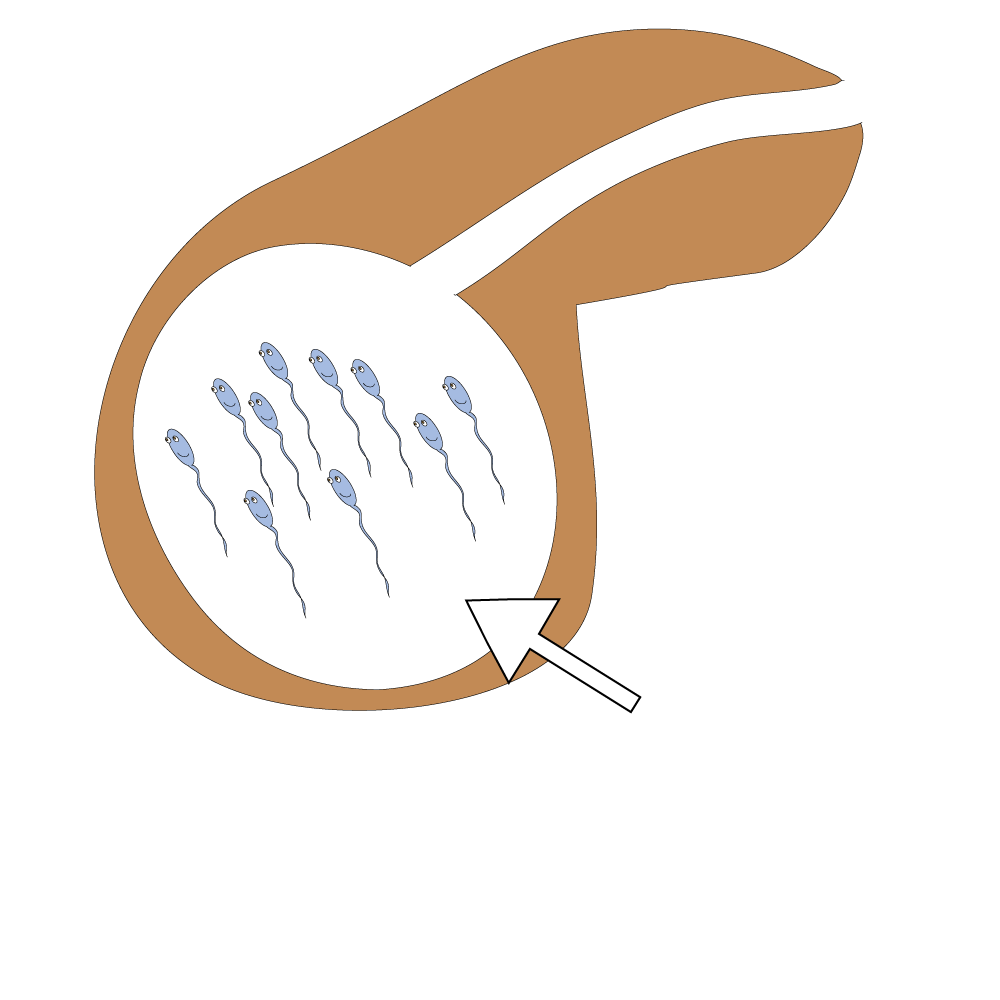Reproduction
Reproduction is how animals and plants make more of themselves. In the case of mammals, including humans, offspring are produced by a male sperm fertilising an egg from the female.
Sex organs are also called reproductive organs because they are the parts of the body that make us able to reproduce (have babies).
This section looks at how reproduction happens.
Human beings are typically either male or female, depending on what type of sex organs they have. The differences are not always visible.
Some people are intersex, which means they have sex organs that are not typically male or female.
People use many different names to refer to sex organs. It is helpful to know and use the correct names so that we can understand and explain changes in our bodies.
KT Cares talks about girls and women having vulvas and vaginas, which are the “female” reproductive organs. It talks about boys and men having penises and testicles, which are “male” reproductive organs. We have described body parts as simply as possible, using language that is familiar to people from different language and cultural backgrounds. Not everyone uses girl and boy labels in this way. We all have the right to choose any lavels we use for our own body.
Not all people can have children, and some people choose not to.
Females have reproductive or sex organs on the inside and the outside of their bodies.

The proper name for the outside part is the vulva. Lots of people mistakenly call it the vagina.


The cervix connects the vagina with the womb.
At the entrance to the vagina, there is a thin bit of skin called the hymen. It serves no practical purpose and can stretch open.
The hymen has nothing to do with virginity. “Losing your virginity” means having consensual sex (sex you agree to) for the first time.
Girls have thousands of eggs inside their ovaries. At puberty, these eggs start to mature and begin to pop out one at a time, every month (at first, this is not regular).
Male sex organs are the parts of the body that make males able to reproduce (make babies).
The proper names for the male sex organs are penis and testicles.

The testicles produce millions of sperm (typically about 10-30 billion sperm every month). The body absorbs sperm that does not come out.
Sometimes the penis gets stiff. This is called an erection. It happens because the blood supply increases.
Men and boys, and even babies, have erections. Erections can happen while a person is asleep, when the penis is touched, or when the person is excited. During puberty, erections can happen unexpectedly.

For more information, please visit –Male reproductive (sex) organs
During puberty, the testicles start producing sperm.

This is a simplified drawing; it is not biologically accurate.
During puberty the testicles begin to produce sperm.



Sperm are the male seeds (or reproductive cells). During puberty, the testicles start producing sperm for the first time. Sperms look a bit like tadpoles and are very tiny. You need a microscope to see them.
When a sperm joins with a female’s egg, the cells divide and an embryo starts to develop. This can happen during sex when the erect penis is inside the vagina and the semen (the liquid containing the sperm), shoots out very fast (ejaculation).
It only takes one sperm to fertilise an egg. Each sperm has all the boy’s information inside it. Each egg has all the girl’s information inside it. A baby has both parents’ sets of information.
UKUKHIQIZA KABUSHA
Ukuzalana yindlela abantu izilwane nezitshalo ezizandisa ngayo. Ezilwaneni ezincelisayo sifaka phakathi nabantu, izingane zivela ngokuba imbewu yowesilisa (isidoda) ivundise iqanda lowesifazane.
Izitho zobulili zibizwa futhi ngezitho zokuzalana ngoba ziyingxenye yomzimba ezenza sikwazi ukuzalana (sibe nabantwana).
Le ngxenye igxile ekutheni ukuzalana kwenzeka kanjani.
Abantu ngokujwayelekile yindoda noma owesifazane, kuye ngokuthi yiziphi izitho zobulili abanazo. Umehluko awuhlali ubonakala kalula.
Abanye abantu abanabo ubulili (baphakathi nendawo), okusho ukuthi banezitho zobulili okungezona ezowesilisa noma ezowesifazana.
Abantu basebenzisa amagama ehlukene ukubiza izitho zobulili. Kuyasiza ukwazi nokusebenzisa amagama afanele ukuze siqonde futhi sichaze ushintsho olwenzeka emizimbeni yethu.
I-KT ikhuluma ngamantombazane nabesifazane benezimomozi (vulvas) kanye nemigudu yezitho zangasese (vaginas), okuyizitho zokuzalana ‘zabesifazane’. I-KT ikhuluma ngabafana namadoda benamapipi (penises) kanye namankwahla (testicles), okuyizitho zokuzalana ‘zabesilisa’. Sizichazile izingxenye zomzimba ngendlela elula ngokungenzeka, sisebenzisa ulimi abantu abalwaziyo ngokwehlukana kwemvelaphi yabo ngokwesiko nangolimi. Akuyena wonke umuntu osebenzisa amagama ezitho zamantombazane nabafana ngale ndlela. Sonke sinelungelo lokukhetha amagama esiwasebenzisayo ukubiza izingxenye zomzimba wethu.
Akubona bonke abantu abangaba nezingane, kanti futhi abanye bakhetha ukungabi nazo.
Abesifazane banezitho zokuzalana noma zobulili ngaphakathi nangaphandle kwemizimba yabo.

Okuyilona gama lengxenye engaphandle yimomozi (vulva). Abantu abaningi benza iphutha lokuyibiza ngevajina (umgudu wesitho sangasese).

Umlomo wesibeletho (cervix) uxhumanisa umgudu wesitho sangasese (vagina) nesibeletho.

Umlomo wesibeletho uxhumanisa umgudu wesitho sowesifazane sangasese kanye nesibeletho.
Ekungeneni komgudu, kunontwentwesi lwesikhumba olubizwa ngehlo (hymen). Ihlo alifezi nhloso etheni kanti futhi liyakwazi ukunwebeka livuleke.
Ihlo kalihlanganise lutho nobuntombi nto. ‘Ukulahlekelwa wubuntombi nto’ kusho ukuzibandakanya ocansini ngokokuqala (lapho nivumelene khona).
Amantombazane anezinkulungwane zamaqanda ngaphakathi kuma-ovari. Ngesikhathi sokuthomba, la maqanda aqala ukuvuthwa bese liphuma ngalinye ngesikhathi, njalo ngenyanga. Uma kusaqala, awaphumi njalo (amaqanda), kodwa ngokuhamba kwesikhathi abe esephuma njalo.
Izitho zobulili zabesilisa yizingxenye zomzimba ezenza abesilisa bakwazi ukuzala (benze izingane).
Amagama okubizwa ngawo izitho zobulili zabesilisa yipipi (penis) kanye namankwahla (testicles).

Amankwahla akhiqiza izigidi zembewu noma isidoda (imvamisa cishe 10-30 isigidi sezigidi (amabhiliyoni) embewu njalo ngenyanga). Umzimba uyayimunca imbewu engaphumelanga ngaphandle.
Ngesinye isikhathi ipipi liyaqina. Lokhu kubizwa ngokuqhanyelwa. Lokhu kwenzeka ngoba liba liningi igazi eliza epipini.
Amadoda kanye nabafana, ngisho nezingane, ziyaqhanyelwa. Ukuqhanyelwa kungenzeka ngenkathi umuntu elele, uma kuthintwa ipipi, noma umuntu ejabule. Ngesikhathi sokuthomba, umuntu angaqhanyelwa engalindele.

Ukuthola ulwazi oluthe xaxa siza uvakashele – Izitho zabesilisa (zobulili) zokuzalana
Ngesikhathi sokuthomba, amankwahla aqala ukukhipha isidoda.

Ngesikhathi sokuthomba amankwahla aqala ukukhiqiza imbewu, isidoda.



Isidoda yimbewu yowesilisa (noma amaseli alawula ukuzalana). Ngesikhathi sokuthomba, amankwahla aqala ukukhiqiza imbewu ngokokuqala ngqa. Imbewu (isidoda) ibukeka njengonoshobishobi futhi yincane kakhulu. Udinga isibonakhulu ukuyibona.
Uma imbewu ihlangana neqanda lowesifazane, amaseli ayanda aphindaphindeke bese kuvela umbungu. Lokhu kungenzeka ngesikhathi socansi lapho ipipi eliqhanyelwe lingaphakathi emgudwini wesitho sangasese kanti noketshezi lwesidoda (uketshezi olunembewu), luphuma ngokushesha (luchitheka).
Yimbewu eyodwa kuphela edingekayo ukuvundisa iqanda. Imbewu ngayinye inayo yonke imininingwane yomfana ngaphakathi kuyo. Iqanda ngalinye linayo yonke imininingwane yentombazane ngaphakathi kulo. Umntwana unayo yomibili imininingwane yabazali bakhe.
REPRODUKTIEWE (GESLAG) ORGANE
Reproduksie is hoe diere en plante meer van hulself maak. In die geval van soogdiere, insluitend mense, word ‘n nageslag geproduseer deur 'n manlike sperm wat 'n eier van die vrou/meisie bevrug.
Geslagsorgane word ook voortplantingsorgane genoem omdat dit die dele van die liggaam is wat ons in staat stel om voort te plant (babas te hê).
Hierdie afdeling kyk na hoe voortplanting plaasvind.
Mense is tipies óf manlik óf vroulik, afhangende van watter tipe geslagsorgane hulle het. Die verskille is nie altyd sigbaar nie.
Sommige mense is interseks, wat beteken dat hulle geslagsorgane het wat nie tipies manlik of vroulik is nie.
Mense gebruik baie verskillende name om na geslagsorgane te verwys. Dit is nuttig om die korrekte name te ken en te gebruik sodat ons veranderinge in ons liggame kan verstaan, identifiseer en verduidelik.
KT praat oor meisies en vroue wat vulvas en vaginas het, wat die 'vroulike' voortplantingsorgane is. KT praat van seuns en mans wat penisse en testikels het, wat 'manlike' voortplantingsorgane is. Ons het liggaamsdele so eenvoudig as moontlik prober beskryf, deur gebruik te maak van ‘n taal wat aan mense van verskillende kulturele en taalagtergronde bekend is. Nie almal gebruik meisie- en seunsetikette op hierdie manier nie. Ons het almal die reg om enige etikette te kies wat ons vir ons eie liggaam gebruik.
Nie alle mense kan kinders hê nie, en sommige mense verkies om nie kinders te he nie.
Vroue/meisies het voortplantings- of geslagsorgane aan die binnekant en die buitekant van hul liggame.

Die regte naam vir die buitekant is die vulva. Baie mense noem dit verkeerdelik die vagina.

Die serviks verbind die vagina met die baarmoeder.

By die ingang van die vagina is daar 'n dun stukkie vel wat die maagdevlies genoem word. Dit dien geen praktiese doel nie en kan ooprek.
Die maagdevlies het niks met maagdelikheid te doen nie. ‘Om jou maagdelikheid te verloor’ beteken om vir die eerste keer konsensuele seks te hê (seks waartoe jy instem).
Vroue/meisies het duisende eiers in hul eierstokke. By puberteit begin hierdie eiers volwasse word en begin elke maand een-op-'n-keer uitspring. Aanvanklik is dit nie gereeld nie, maar word dan gewoonlik meer gereeld.
Manlike geslagsorgane is die dele van die liggaam wat mans/seuns in staat stel om voort te plant (maak babas).
Die eiename vir die manlike geslagsorgane is penis en testikels.

Die testikels produseer miljoene sperms (gewoonlik ongeveer 10-30 miljard sperms elke maand). Die sperms wat nie uitkom nie, absorbeer die liggaam.
Soms word die penis styf. Dit word 'n ereksie genoem. Dit gebeur omdat die bloedtoevoer toeneem.
Mans en seuns, en selfs babas, het ereksies. Ereksies kan plaasvind terwyl 'n persoon slaap, wanneer die penis aangeraak word, of wanneer die persoon opgewonde is. Tydens puberteit kan ereksies onverwags plaasvind.

Vir meer inligting, besoek asseblief – Manlike voortplantings- (geslags-) organe
Tydens puberteit begin die testikels sperm produseer.

Dit is 'n vereenvoudigde tekening; dit is nie biologies akkuraat nie.



Sperm is die manlike sade (of voortplantingselle). Tydens puberteit begin die testikels vir die eerste keer sperm produseer. Sperms lyk 'n bietjie soos paddavissies en is baie klein. Jy het 'n mikroskoop nodig om hulle te sien.
Wanneer 'n sperm met 'n vrou/meisie se eier verbind, verdeel die selle en 'n embrio begin ontwikkel. Dit kan tydens seks gebeur wanneer die regop penis in die vagina is en die semen (die vloeistof wat die sperm bevat) baie vinnig uitskiet (ejakulasie).
Dit neem net een sperm om 'n eier te bevrug. Elke sperm het al die man/seun se inligting daarin. Elke eier het al die vrou/meisie se inligting daarin. ’n Baba het albei ouers se stelle inligting.
TSOSOA
Ho etsa bana ke kamoo diphoofolo le dimela di ikatisang ka teng. Diphoofolong, ho kenyeletswa le bathong, bana ba etswa ke peo ya botona e nontshang lehe la phoofolo kapa motho e motshehadi.
Ditho tsa ho etsa thobalano di boetse di bitswa ditho tsa ho etsa bana hobane ke ditho tsa mmele tse etsang hore re kgone ho hlahisa bana.
Karolo ena e sheba kamoo ho etsa bana ho etsahalang ka teng.
Hangata batho e ba ba batona kapa ba batshehadi, ho itshetlehile ka hore ba na le setho sa mofuta ofe sa ho etsa thobalano. Diphapang ha se kamehla di bonahalang.
Batho ba bang ba hola ba sa totobala hore ba batona kapa ba batshehadi, ho bolelang hore ba na le ditho tsa ho etsa thobalano tseo hangata e seng tsa botona kapa botshehadi.
Batho ba sebedisa mabitso a mangata a fapaneng ho bolela ditho tsa mmele tsa ho etsa thobalano. Ho a thusa ho tseba le ho sebedisa mabitso a nepahetseng hore re kgone ho utlwisisa le ho hlalosa diphetoho tse mmeleng ya rona.
KT e bua ka banana le basadi ba nang le divalva le botshehadi, tseo e leng ditho tsa mmele tsa 'botshehadi' tsa ho etsa bana. KT e bua ka bashemane le banna ba nang le Dikwae le makwalata/ditapole, tseo e leng ditho tsa mmele tsa 'botona' tsa ho etsa bana. Re hlalositse ditho tsa mmele habobebe kamoo ho ka kgonahalang, re sebedisa puo eo batho ba botjhaba le dipuo tse fapaneng ba e tlwaetseng. Ha se motho e mong le e mong ya sebedisang dileibole tsa ngwanana le moshemane ka tsela ena. Kaofela ha rona re na le tokelo ya ho kgetha dileibole dife kapa dife tseo re di sebedisetsang mmele ya rona.
Ha se batho kaofela ba kgonang ho ba le bana, mme batho ba bang ba kgetha ho se be le bona.
Batho ba batshehadi ba na le ditho tsa mmele tsa ho etsa bana kapa thobalano ka hare le ka ntle ho mmele ya bona.

Lebitso le loketseng karolo ya ka ntle ke valva. Batho ba bangata ba e bitsa botshehadi ka phoso.

Molomo wa popelo o kopanya Botshehadi le popelo.

Molomo wa popelo o kopanya botshehadi le popelo.
Karolong e kenang ka botshehading, ho na le letlalo le le sesane le lenyane le bitswang haemene. Ha e na sepheo seo e se etsang mme e kgona ho saroloha e bulehe.
Haemene ha e amane le bokgarebe. ‘Ho lahlehelwa ke bokgarebe ba hao’ ho bolela ho etsa thobalano eo o dumelang ho e etsa lekgetlo la pele.
Banana ba na le diketekete tsa mahe ka hara diouvari tsa bona. Dilemong tsa borwetsana, mahe ana a qala ho butswa mme ho qale ho tswa le le leng ka nako, kgwedi e nngwe le e nngwe. Qalong, hona ha ho etsahale kamehla, empa ho be ho etsahala kamehla.
Ditho tsa mmele tsa botona tsa ho etsa thobalano ke ditho tsa mmele tse etsang hore banna ba kgone ho hlahisa bana (etsa bana).
Mabitso a loketseng a ditho tsa mmele tsa botona tsa ho etsa thobalano ke kwae le makwalata/ditapole.

Makwalata/ditapole di hlahisa dimiliyone tsa peo ya botona (tseo hangata e ka bang dipeo tse dibiliyone tse 10-30 tsa botona kgwedi e nngwe le e nngwe). Mmele o monya peo ya botona e sa tsweng.
Ka dinako tse ding botona bo ya tiya. Hona ho bitswa ho tsohelwa. Ho etsahala ka lebaka la ho phahama ha phepelo ya madi.
Banna le bashemane, le masea, a a tsohelwa. Ho tsohelwa ho ka etsahala le ha motho a robetse, ha ho tshwarwa-tshwarwa botona kapa ha motho a thabile. Dilemong tsa bohlankana/borwetsana, ho tsohelwa ho ka etsahala ho sa lebellwa.

Ho fumana lesedi le fetang lena, etela karolo e buang ka – Ditho tsa mmele tsa botona tsa ho etsa bana (thobalano)
Dilemong tsa bohlankana makwalata/ditapole di qala ho hlahisa peo ya botona.

Ena ke kutlwisiso e bebofaditsweng; ha e a nepahala hantle ho ya ka tsela eo mmele o etsang ka yona ka tlhaho.
Dilemong tsa bohlankana makwalata/ditapole di qala ho hlahisa peo ya botona.



Peo ya botona ke disele tse etsang bana. Dilemong tsa bohlankana makwalata/ditapole di qala ho hlahisa peo ya botona lekgetlo la pele. Dipeo tsa botona di shebahala jwalo ka mekudubete mme di nyane haholo. O hloka maekroskoupu hore o di bone.
Ha peo ya botona e kopana le lehe la motho e motshehadi, disele di a arohana mme embriyo e qala ho hlaha/hola. Hona ho ka etsahala nakong ya thobalano ha kwae e tsohetsweng e le ka hara botshehadi le lero la botona (mokedikedi o nang le peo ya botona), e tswa ka potlako haholo (ho rota peo ya botona).
Ho nka peo e le nngwe feela ya botona ho nontsha lehe. Peo e nngwe le e nngwe ya botona e na le dintlha kaofela tsa moshemane ka hara yona. Lehe le leng le le leng le na le dintlha kaofela tsa ngwanana ka hara lona. Lesea le na le disete tsa dintlha tsa batswadi ka bobedi.